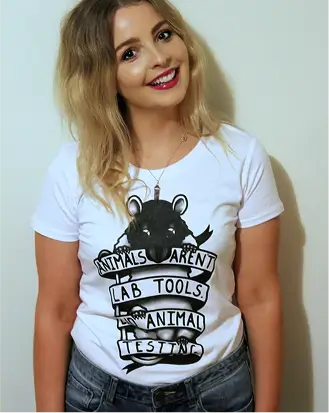It might come as a surprise, but the dairy industry and animal testing are deeply intertwined.
At NZAVS, we're committed to sharing the truth—our evidence-based approach ensures that we bring you the facts about the use of animals in science.
In Aotearoa, New Zealand, a significant amount of research is conducted on cows, heifers, bulls, and calves (collectively known as cattle) for the dairy industry. We're here to shed light on this issue and raise awareness about the impact of these practices!
With over 5.91 million dairy cows in NZ1, producing millions of metric tons of milk each year —mostly for export2—the financial stakes are high, leading to relentless pressure to push these animals beyond their natural capabilities.
A typical dairy cow in NZ produces between 18 to 23 litres of milk per day, amounting to over 4,700 litres per year. 3 Naturally, a cow would only produce enough milk to nourish her calf, around 800 litres annually. 4
Yet, the industry continues to push for more, leading to thousands of cows being used in research each year to try and enhance productivity and profitability.
Animal Testing Exposed:
Here are some distressing examples of research conducted in NZ for the dairy industry, published only recently, at the expense of cattle…
- Calves Fed Parasitic Worms: Young calves, about 6 months old, were force-fed 30,000 larvae of stomach and intestine worms. After five weeks, only half were treated with antiparasitic.5
- Bulking Up Cows: Calves as young as 3-4 months old were given B12 supplements to accelerate growth rates, treating them as mere commodities to increase profits. 6
- Repeated Embryo Flushing: Pregnant cows underwent multiple uterus flushings to analyse embryos, aiming to link "embryo quality" to stress levels in dairy cows.7
- Methane Reduction Trials: Young cows were force-fed drugs to see if they could lower methane emissions.8
- Bacterial Infection Spread: Newborn calves, just 12 hours old, were placed in pens with varying hygiene standards to study the spread of infections.9
This type of research is often funded by major industry players like Dairy NZ and Fonterra, highlighting the troubling extent of animal exploitation.
We at NZAVS stand for non-violence and compassion, so remember that our issue is not with individual farmers (who most probably don’t even know that these experiments take place!) but with the systemic practices that harm animals.
You can make a difference.
By supporting NZAVS, you are part of the solution and the fight to end animal experiments and the harmful use of animals for science. Your donation can help fuel our important and life-saving work for animals:
Make a change today.
Another powerful way to help is by going vegan or incorporating more vegan kai into your diet. Next time you're enjoying a coffee, try swapping cow's milk for delicious oat, almond, soy, or coconut milk. By reducing our consumption of dairy products, we can diminish the demand for these cruel experiments!
Together, we can create a future where no animal suffers for the sake of profit.
- https://www.statista.com/statistics/974482/new-zealand-dairy-cattle-numbers/
- https://www.statista.com/statistics/732086/new-zealand-milk-production-volume/
- https://www.dairynz.co.nz/media/tb0bjret/dairy_statistics_2022-23_book_-final.pdf
- Slicher van Bath, B. H (1963). The agrarian history of Western Europe, A.D. 500-1850. London, E. Arnold
- https://doi.org/10.1080/00480169.2024.2351128
- https://doi.org/10.1080/00480169.2023.2254729
- https://doi.org/10.1002/mrd.23702
- https://doi.org/10.1080/00480169.2024.2330914
- https://doi.org/10.1080/00480169.2023.2238654





